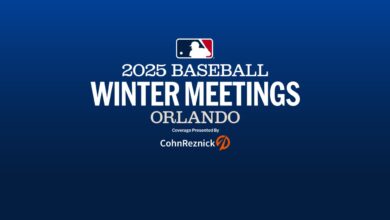
Forbes Values Cubs at $4.6B, Fourth Highest in MLB
Tom Ricketts infamously told the world that the Cubs’ goal was simply to break even between team revenue and player payroll, just the latest in a series of statements from the chairman that struck fans as worse than tone deaf. This one probably falls somewhere between “dead-weight money” and “biblical losses” in the Ricketts lexicon,
“They think somehow we have all these dollars that the Dodgers have or the Mets have or the Yankees have and we just keep it, which isn’t true at all,” Ricketts told 670 The Score during Cubs Convention. “What happens is we try to break even every year, and that’s about it.”
This tracks with something Ricketts had told a small group of (possibly inebriated) CubsCon-goers a few years earlier when he explained that the goal of owning a professional sports team is asset appreciation. The Cubs have certainly succeeded on that front, rising from $845 million when the Ricketts family purchased the team in 2009 to the latest Forbes valuation of $4.6 billion. That’s a 9% increase over last season and puts the Cubs fourth in MLB behind the Yankees ($8.2B), Dodgers ($6.8B), and Red Sox ($4.8B).
It’s important that we don’t go conflating value with liquidity, but I think we can all agree that the Cubs don’t have a great excuse for carrying a payroll outside the top 10. Like, ever. Even being lower than fifth is hard to swallow. Then you figure their $81 million operating income is nearly four times higher than the Dodgers’ ($21M) and nearly $140 million higher than the Yankees, who operated at a $57 million loss last year.
But before you go lighting your torches and carrying pitchforks down to the Cubs’ offices or to Ricketts’ house — with his three cable subscriptions to make sure he can watch his team play — just stop and think that he’s probably being truthful. At least to the extent that the accounting makes things look. I don’t have a very hard time believing the Cubs do direct their team-specific revenue back into payroll, it just may be that money from ownership’s other holdings isn’t factored into that.
Of course, we’ll never know for sure because these are private businesses with no obligation to disclose their finances to the public. Does the tax money they save from Wrigley Field’s national historic landmark status factor, or was that all spent dealing with a federal ADA lawsuit over the ballpark’s accessibility? How about the nine-figure DraftKings sponsorship of the new sportsbook, or the money generated from gambling? Again, I have no idea.
What I do know is that budget restrictions have prevented the Cubs from meaningfully pursuing any number of free agents, from Bryce Harper to Juan Soto. They even had to trade Cody Bellinger just to have room to fill out the roster this year, and there’s been nothing to indicate they’ll be willing or able to pay Kyle Tucker what it’ll take to keep him in Chicago.
Tom Ricketts when asked about what move that “didn’t happen, but almost did” and that he would “still kind of think about”
His answer??
Bryce Harper. pic.twitter.com/DdOyZmCxd4
— ?️? (@blakecowellx) March 20, 2025
I’m not mad, I’m just disappointed. That’s why I’m not going to go back through the way the organization fumbled the bag by not finding a way to buy its way out of its fractured television broadcast agreements back in 2015. Failing to do so carried them past the bursting of the RSN bubble and left them scrambling to line up carriage deals for Marquee, which launched in 2020 just before the world shut down. If you could point to one event in the timeline that has led the Cubs to where they are financially, it’s that.
That said, seeing the franchise’s value soar to over five times what it was when they purchased it has to make the Ricketts family pretty happy. Not a bad investment for Papa Joe after all, and that was the plan all along. As for how the reinvestment into the team on the field will play out, I guess we’re about to see.
Ed. note: According to BrooksGate, the Cubs rank 26th in MLB for percentage of 2024 revenue being spent on 2025 payroll plus estimated luxury tax payments. The Cubs’ $213 million payroll for this season represents just 36.4% of their $584 million revenue last year, putting them ahead of only the Pirates (35.4%), Rays (33.8%), White Sox (31.6%), and Marlins (27%). That’s not a good thing.
Tom Ricketts when asked about what move that “didn’t happen, but almost did” and that he would “still kind of think about”
His answer??
Bryce Harper. pic.twitter.com/DdOyZmCxd4
— 🅱️🚂 (@blakecowellx) March 20, 2025

